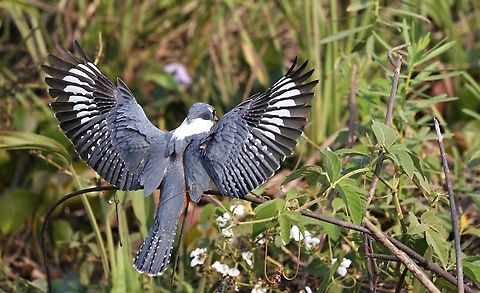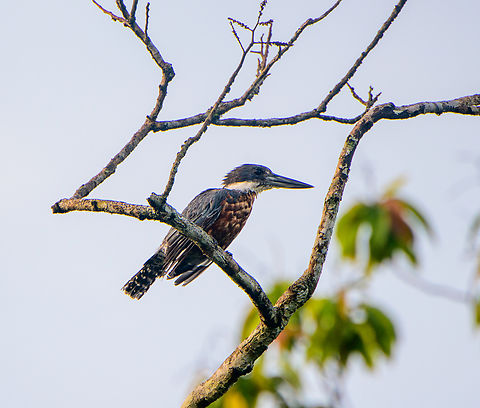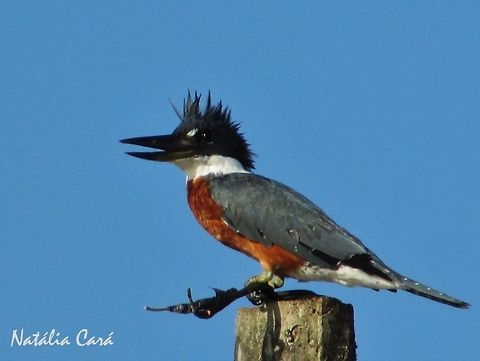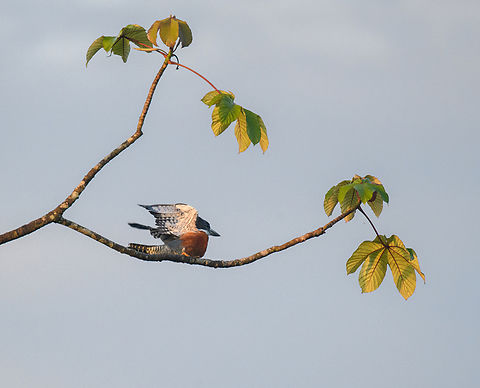
Appearance
It is 40–41 cm long, with deep blue or bluish-gray plumage with white markings, a shaggy crest and a broad white collar around the neck. Its most distinguishing characteristic is the entire rufous belly, which also covers the entire breast of the male. Females are more colorful than the male and have a bluish-gray breast and a narrow white stripe separating the breast from the belly.
Naming
The "Megaceryle" kingfishers were formerly placed in "Ceryle" with the Pied Kingfisher, but the latter is genetically closer to the American green kingfishers.
Behavior
It is often seen perched prominently on trees, posts, or other suitable "watchpoints" close to water before plunging in head first after its fish prey. They also eat small mammals, insects, small reptiles and berries.Their voice is a loud, penetrating rattle given on the wing and when perched.

Habitat
The breeding habitat is areas near large bodies of water, usually in heavily wooded areas where it finds a perch to hunt from. It is mostly a sedentary species, remaining in territories all year long.These birds nest in a horizontal tunnel made in a river bank or sand bank. The female lays 3 to 6 eggs. Both parents excavate the tunnel, incubate the eggs and feed the young.
References:
Some text fragments are auto parsed from Wikipedia.